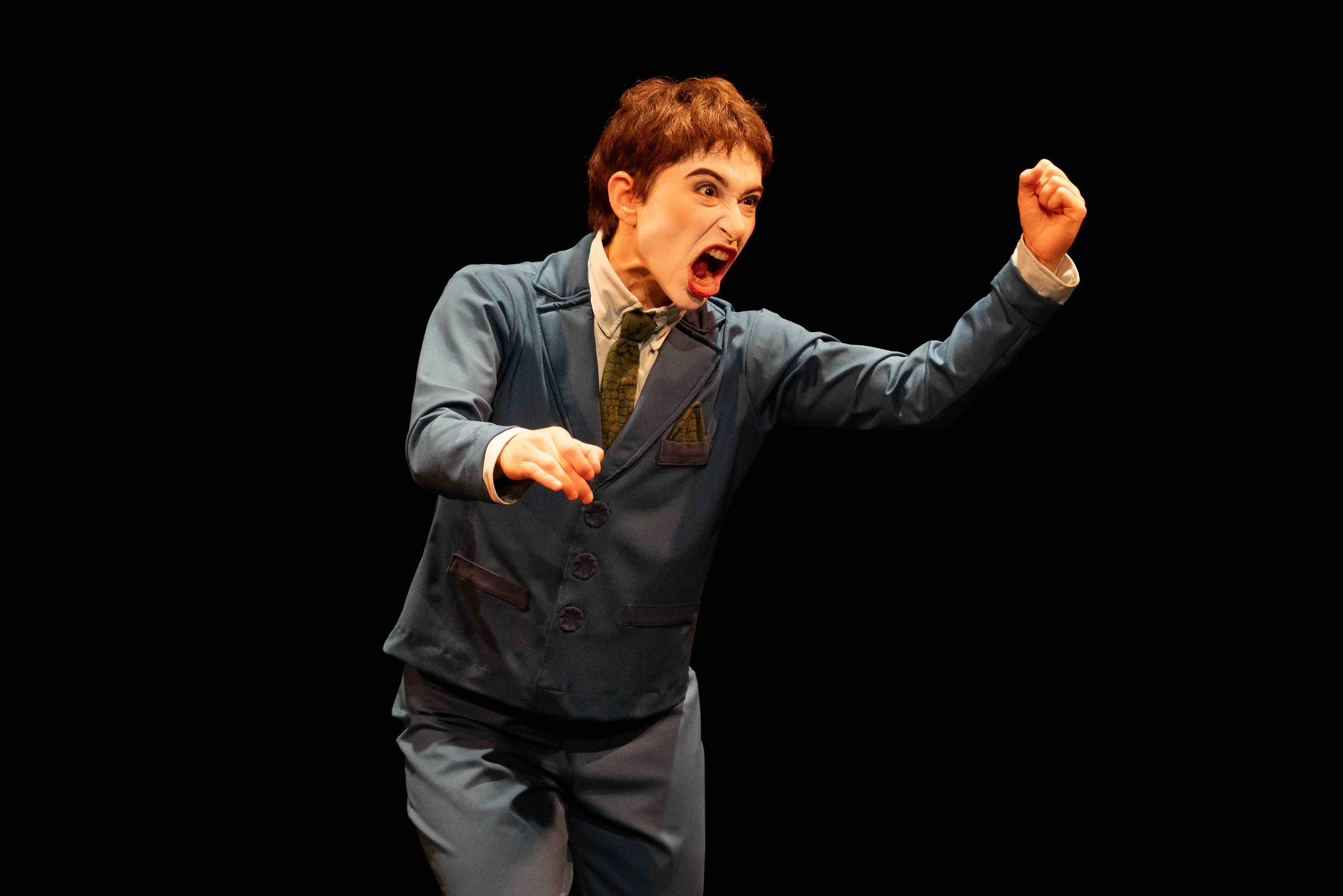Theatre review: Studio 58's The Tempest finds fresh energy, and hope, atop a garbage heap
Directed by Diana Donnelly, the show addresses climate themes and weaves in contemporary alt-rock and pop songs
Marianna Zouzoulas and Terrence Zhou in The Tempest. Photo by Emily Cooper
Studio 58 presents The Tempest to October 22
STUDIO 58’s THE TEMPEST goes beyond serving simply as a student showpiece, with director Diana Donnelly’s imaginative vision—helped by the collaborative efforts of fellow creative team members, including choreographer Lee Su-Feh and set designer Emerenne Saefkow—creating a fresh, quirky, and innovative interpretation. The production brings contemporary resonance to Shakespeare’s classic, including messaging on climate change and broken communities. A reimagined work like this would not feel out of place on the professional stages of the likes of Bard on the Beach, and it’s a tremendous opportunity for Studio 58’s students. In turn, Donnelly’s vision is brought to life with the talent and energy of the young actors.
Donnelly has gender-flipped most of the male parts in Shakespeare’s play, including the lead role of Prospero. We learn at the top of the show that “Prospera” was once the duchess of Milan, but was overthrown by her sister Antonia. Prospera fled to a deserted island with her daughter Miranda, and the pair has survived thanks to Prospera’s magical powers, which allow her to rule over the slave monster Caliban and three local spirits known as the Ariels. When a ship carrying Antonia and other dignitaries from Milan sails close to the island, Prospera conjures a tempest—a storm—to cause Antonia and company to become shipwrecked on the island. Among the various subplots that transpire, the now 15-year-old Miranda meets young Ferdinand and romance blooms.
The climate-change theme takes physical form in Saefkow’s set—an astounding mound of random trash, including old home appliances, tires, and household waste. It resembles a landfill site, implying that all this garbage has been washed up on the island. There’s plastic galore—much of the garbage onstage is covered in cling wrap—and in the opening scene shipwreck, we see the actors wash their way onto the shore in the same wrap, further emphasizing the planet’s overuse of plastic.
When Prospera introduces each of the characters that she wants to take revenge on, she pulls up their limp bodies from the floor and describes to the audience the damage they’ve done to her. But as the play draws on, the question emerges—is all this revenge worth it, or is it better to forgive and move on? Prospera’s magical powers can be used as a weapon of dominance—be it over others (including the act of colonialism) or the environment—all of which make her journey and choices resonate.
Kat Stevens is impressive as Prospera, evoking remarkable maturity beyond her years. With her mysterious demeanour, wild hair, and thoughtful interpretation of Shakespeare’s complex prose, Stevens’s Prospera is part ethereal being, part hippie—and she’s convincing as a woman old enough to have a teenage daughter. As Miranda, Marianna Zouzoulas offers a refreshing take, interpreting the text with adolescent inquisitivity and sincere emotions. Her love-struck behaviour toward Ferdinand is comical, but also completely logical given how Miranda has never met anyone from off the island before. As Ferdinand, Terrence Zhou has an enjoyably enthusiastic stage presence, and he and Zouzoulas make for a charming onstage couple. Their young love can be interpreted as hope for the future, given the show’s messaging on climate change and broken humanity.
Emma Abbott, Hikari Terasawa, and L Danger as “The Ariels” in The Tempest. Photo by Emily Cooper
An outstanding highlight of the show is the riveting Emma Soothill, as slave monster Caliban. Memorable for her standout performance as the feisty Sheila in Studio 58’s A Chorus Line last season, Soothill showcases her versatility here, conjuring up her own unique and delightfully disturbing version of Caliban. Thanks to costume designer Alaia Hamer’s inventive aesthetics, which include black gloves with long, threatening fingers reminiscent of Freddy Krueger, Soothill looks every bit a sinister creature, and her performance is supercharged with unapologetic freakiness, attitude, and comic relief.
Director Donnelly has tripled the role of island spirit Ariel. Now known as the “Ariels”, Emma Abbott, L Danger, and Hikari Terasawa are terrifically engaging; akin to Titania’s fairy servants in A Midsummer Night’s Dream, the Ariels carry the show along with humour and grace, and Abbott, Danger, and Terasawa employ their triple-threat talents every step of the way. There are many times when they sing, and athletically fly and roll across the stage. At one point, the trio even portrays savage hounds with frightening believability.
Throughout the show, we’re treated to both a visual and musical spectacle, with amusing costumes, and music and choreography infused throughout. Despite the bleak overtones of the climate-change messaging, the show still has fun with the garbage onstage. With light beaming from under a tire, and Soothill’s entrance from the inside of a fridge, this presentation offers shades of the garbage-filled playground in Cats.
And while the music adds to the spectacle, it’s also used strategically. There’s a mix of alternative rock and some pop songs—including songs by Radiohead, Bikini Kill, Olivia Rodrigo, and Dua Lipa—that not only suggests conflict with mainstream society, but perhaps also indicates the period from when Prospera was young to the present moment. After all, the show sees her dealing with the inner demons she’s gained over her life. There’s also a hilarious scene appropriately set to Macklemore’s “Thrift Shop”. While these musical choices momentarily pause from Shakespeare’s prose, they still fit the context and further the plot. Take, for example, the company singing Tegan and Sara’s “Sometimes I See Stars”, a song about rediscovered dreams—and a turning point for Prospera.
Still, the ultimate musical highlight is the wedding sequence in the second half, where we see the island’s goddesses—played with confidence and sass by Marielle Ortinez, Danica Kobayashi, and Janavi Chawla—strut around in Hamer’s garbage-inspired ballgowns in what looks like a hybrid of a RuPaul’s Drag Race runway competition and the Met Gala’s red-carpet entrance. The goddesses lead the company in an energized and entertaining dance sequence set to the Eurythmics’ “Sweet Dreams”, complete with strobe lighting.
Moments like these, including the curtain call when the cast dances to Dua Lipa’s “We’re Good”, fit the youthfulness of the cast wonderfully. But they don’t take away from the integrity of The Tempest, instead adding to the play’s intended enchanting essence—and pulling it into the 21st century.














